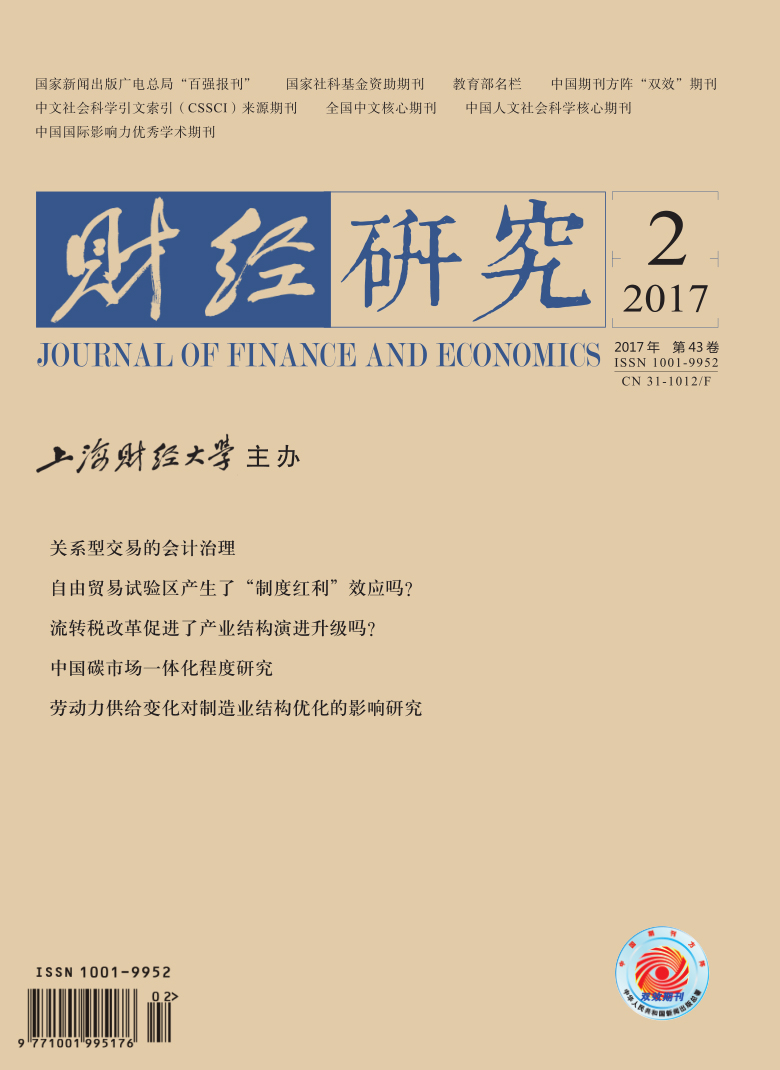建设中国自由贸易试验区是“新常态”下国家深化改革与扩大开放的一项重大战略,是新一轮制度创新的“试验田”。文章以上海自贸区为例,基于面板数据的政策效应评估方法,利用地区间经济发展的相关性构造上海市的反事实经济绩效,并对比上海市的真实经济绩效,进而估计出上海自贸区产生的“制度红利”效应。研究表明:(1)上海自贸区建设显著促进了上海市
自由贸易试验区产生了“制度红利”效应吗?--来自上海自贸区的证据
摘要
参考文献
摘要
11 Coase R H. The task of the society[R].International Society for New Institutional Economics Newsletter, 1999.
12 Du Z, Yin H, Zhang L. The macroeconomics effects of the 35-hour workweek regulation in France[J].B.E.Journal of Macroeconomics, 2013, 13(1):881-901.
13 Hsiao C, Ching H S, Wan S K. A panel data approach for program evaluation:Measuring the benefits of political and economic integration of Hong Kong with mainland China[J]. Journal of Applied Econometrics, 2012, 27(5):705-740. DOI:10.1002/jae.v27.5
14 Wei S-J. Open door policy and China's rapid growth:Evidence from city-level data[R].NBER Working Paper No. 4602, 1993.
15 Wilson J S, Mann C L, Otsuki T. Trade facilitation and economic development:A new approach to quantifying the impact[J]. World Bank Economic Review, 2003, 17(3), 367-389. DOI:10.1093/wber/lhg027
16 Yao D, Whalley J. The Yuan and Shanghai Pilot Free Trade Zone[J]. Journal of Economic Integration, 2015, 30(4):591-615. DOI:10.11130/jei.2015.30.4.591
17 Yao D, Whalley J. The China (Shanghai) Pilot Free Trade Zone:Background, developments and preliminary assessment of initial impacts[J]. The World Economy, 2016, 39(1):2-15. DOI:10.1111/twec.2016.39.issue-1
引用本文
殷华, 高维和. 自由贸易试验区产生了“制度红利”效应吗?--来自上海自贸区的证据[J]. 财经研究, 2017, 43(2): 48–59.
导出参考文献,格式为:





 8337
8337  11389
11389

